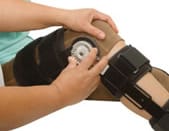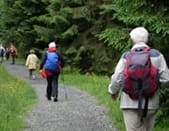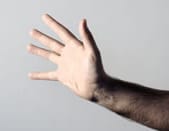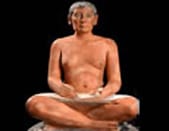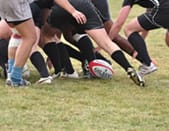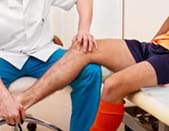What is the importance of mechanical factors in osteoarthritis?
Osteoarthritis is the result of a weakening of the joint cartilage, highly resistant tissue that can endure repeated stress throughout the course of your life.
Thus, with every bit of pressure, the cartilage in a weight-bearing joint resists a load equal to 4 to 6 times your body weight. This amazing resistance may be insufficient when there is repeated mechanical stress and/or weakness of the cartilage (metabolic or anatomical abnormality).
In osteoarthritis, the harmful role of mechanical phenomena is demonstrated by the site of the cartilage damage in areas of pressure and the presence of osteoarthritis in specific occupational activities.
Can work promote osteoarthritis?
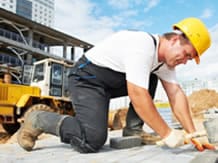
Previously, the process of osteoarthritis was likened to the ageing process, due to progressive degeneration. However, many authors believe that the actual process is rather an accumulation of microtrauma, the amount of which obviously increases with age.
Thus, osteoarthritis which appears in elderly people is due to an accumulation of microtrauma. It is for this reason that certain people more exposed than others to various specific microtrauma develop osteoarthritis quite early.
Microtrauma more readily encountered in the workplace includes:
Mechanical vibrations and shocks transmitted by certain machine tools and objects
Disorders caused by certain movements and postures of work.
However, how these two factors cause injury to the joint has not been established scientifically.
Epidemiologically it is known, however, that individuals using pneumatic drills develop osteoarthritis of the elbow in a higher proportion than the general population.
The proof that we can provide today is an increased risk of developing osteoarthritis in connection with the pursuit of certain occupations including the following examples:
- The onset of osteoarthritis of the elbows, wrists and shoulders in a higher proportion among workers who use a pneumatic drill.
- A higher incidence of osteoarthritis of the elbow in diggers, blacksmiths, stonemasons and metalworkers and miners as well as in users of pneumatic drills or compressed air power tools.
- Increased incidence of osteoarthritis of the knee, hip and fingers in carriers of heavy loads, such as construction workers.
- More significant osteoarthritis of the knee in miners.
- Increased by a factor of 1.5 to 4 of osteoarthritis of the hips, knees and shoulders among minors than among the general population.
- The onset of more significant osteoarthritis of the fingers in dressmakers, pianists or workers working with a pneumatic drill or compressed air power tools.
- A high incidence of digital osteoarthritis among cotton workers and diamond cutters.
- The development of cervical spondylosis among rugby players.
Which joints are most affected?
1- Spine
It is especially at this level that problems of a connection between degenerative disk disease and work occur most frequently. However, the triggering cause or causes of disc degeneration are not fully understood.
Some scientists suggest that a trauma to the intervertebral disc may result in separation of the epiphyseal plate (this is the junction area between the disc and the vertebra, which plays a role in nutrition of the disc). It is now well recognised that repetitive strain injuries can lead to disc degeneration and apophyseal osteoarthritis.
These repetitive strain injuries can be formed by low frequency vibration or by direct shocks and aftershocks.
People at risk are those:
- who have an activity involving a high muscular workload (building labourers, dockworkers, porters),
- doing work in which the load is intermittent and brief,
- doing work with unbalanced postures such as those requiring prolonged trunk flexion, vibrations shaking the spine (such as with construction machinery and lorries).
Several surveys have shown that by comparing X-rays taken of heavy labourers (dockworkers) and a control group, there was, for fully comparable ages, accelerated "radiological" ageing of the spine in the group of heavy labourers.
2- Elbow
Occupational health provides a connection between osteoarthritis of the elbow if it shows radiological signs of osteophytes (bone building at the joint involved) and certain types of work. The latter are those that give rise to vibrations such as those encountered in:
a) Hand-held power tools, including:
- Percussive machines, such as pneumatic drills (vibration below 40 Hz), chisels (the chisel enables removing burr from metal parts), Bouchard hammers (hammers used by masons) and rammers (vibrations between 50 and 300 Hz);
- Roto-percussion machines such as hammer drills, percussion drills and impact wrenches;
- Rotary machines, such as polishers, grinders, chain saws and power saws (with frequencies above 300 Hz);
b) Hand-held tools related to some of the machines mentioned above, notably in chiselling work;
c) Hand-held objects during manufacture, especially in work on grinding and polishing machines and work on swaging machines (machine to reduce the diameter of a tube by hammering).
d) Work usually involving exposure to shocks caused by using manual percussive tools:
- Hammering work such as blacksmith work, sheet metal working, boiler making and leather work;
- Earthwork and demolition work;
- Using sealer guns;
- Using nail guns and rivet guns.
3- Knee
Knee osteoarthritis can be caused by repetitive bending of the knee and overloading the joint.
Work activities predisposing you to knee osteoarthritis should include a phase of squatting or kneeling with phases of straightening up, or using ladders or repeatedly going up and down stairs. These movements should be performed at least two hours a day for 5 years. If these activities are accompanied by carrying loads, the duration of exposure is reduced to two years.
The existence of the disease must be proven before the age of 55 in women and before the age of 60 in men.
Claims for compensation are taken into account by the open system, meaning that occupational exposure should be direct and determinant to the cause of the disease.
Can you prevent osteoarthritis associated with certain types of work?
Prevention is difficult. The type of advice that a doctor can give is as follows:
You must acquire and develop good dorsolumbar and abdominal musculature.
It is essential to be familiar with good practices of postures and actions at work This is the case in straightening up of lordosis, the effort of holding oneself in a good position and being vigilant with regard to lumbar locking (see below: learning how to relieve your back).
It is important to combat excess weight and abdominal obesity.
It is important to correct hyperlordosis of the lumbar spine.
Lastly, the role of certain anomalies of the spine such as scoliosis and in particular spondylolisthesis, but also classic asymmetrical defects, now being recognised, should be corrected.
Ergonomic advice is absolutely essential and should be discussed with the company doctor.






